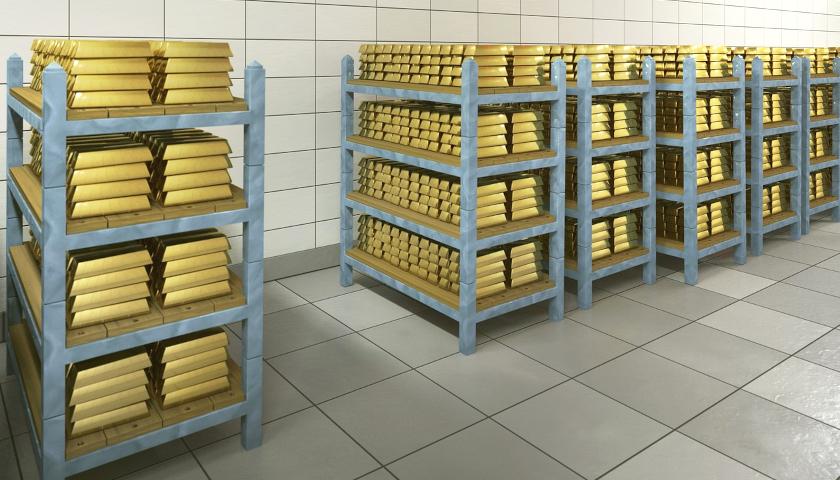by Christopher Roach
The economy looms large in the minds of most people and not simply because it is an election year. It affects us directly. We spend a lot of our waking hours at work, and our jobs are often connected to the welfare of families and children. With everything being more expensive, getting a toe hold on mere middle-class status is harder now than it was for older generations. Many people are slipping down a rung or three.
In addition to long-term trends like the decline of manufacturing and the cut-throat financialization of corporate America, unique recent events loom large. COVID lockdowns, soon followed by the government money giveaway—PPP loans, augmented unemployment benefits, rent relief, and other stimulus plans—disrupted our routines and affected the entire economy. While these measures likely prevented a deep recession, the shutdowns ruined a lot of businesses, and the various stimulus funds ended up unleashing inflation.
These policies also catalyzed a number of unpredictable changes, particularly to labor markets. Many changed jobs, moved, slowed down, and, in some cases, dropped out entirely in an event called the Great Resignation. Well into 2022, managers complained repeatedly that employees were hard to come by and “no one wanted to work.”
Back to Work
The lack of workforce participation seems to have changed. Unemployment remains low. Companies seem lately to be humming along with a lot of employees. Just by way of example, I went to a Chipotle recently, and half a dozen people were working behind the counter. It was not like that even a year or two ago, when fast food was anything but fast.
Perhaps this is an illusion. Pandemic-era government measures destroyed a lot of businesses, particularly small ones, and perhaps there are just fewer jobs to go around. That said, I do not see a lot of vacant retail space; it is nothing like the deep recession of 2008-2012. And it seems multiple lines of employee-heavy service business are fully up to speed: hotels, restaurants, bars, etc. People everywhere are working and looking busy.
This is another data point in favor of the Phillips Curve—the well-known inverse relationship of inflation and unemployment. It never completely made sense to me, but I believe the explanation is that inflation dissipates whatever effects minimum wage laws have on employment and that inflation also pushes up wages in general as life becomes more expensive and workers demand more compensation.
I believe rising expenses are the dominant factor this time around. People who were doing well and even saving a lot during the lockdowns are just beginning to find themselves underwater. Everything costs 20 percent-30 percent more than it did only a few years ago. There is also another aspect, which has not been fully explored in depth, that also explains the temporary disappearance of workers: fraud money has run out.
The scale of COVID-related fraud will never be fully known, but if it added up to several hundred billion ill-gotten dollars floating around (or even a trillion), I would not be surprised.
While most of these were legitimate loans, there were thousands of fake ones. I noticed something odd in late 2020. At the height of COVID and amid massive unemployment, all kinds of people were living large, going to five-star restaurants, and—trying to be as polite as possible—there seemed to be a real mismatch between their social class and the places they were eating. This seems to have all come to a halt sometime in the last year or so. And when the money ran out, people had to figure something else out, and some of them apparently decided to give work a try.
This is good for the workers and society. Men in particular need to work to feel self-respect. And, while inflation is bad, people working is certainly better than all the fraud money sloshing around, making the worst sorts party on the dimes of those who follow the rules and pay taxes.
Monetary and Fiscal Policy Mismatch
Since 2021, the Federal Reserve has done a lot to try to tamp down inflation. It has raised and kept interest rates high since 2021, even though Treasury Secretary Janet Yellen insisted at first inflation was “transitory,” casting some doubts on her reputed economic genius.
Raising interest rates and keeping them high for a while has been a good policy, in my opinion. Things were probably too high for too long before COVID hit us, which created bubbles and contributed to inflation. With low rates during good times, there is no way to encourage economic growth with rate cuts during slow downs.
Even with this policy, there remains a lot of inflation, and this is driven by massive and sustained government debts year over year. Their belt never gets tightened. Decades of deficit spending have created a vicious circle of feedback with existing high rates. With more debt, rates must rise to encourage investors to buy bonds. The higher the rates, the more the government’s debt service costs increase, driving costs higher in the next round of bond issuance.
People with skin in the game have a way of seeing what is happening. The canary in the coal mine may be better described as the canary in the gold mine. Gold has gone nuts. Its spot price is now $2,300. It is higher now than it was in the wake of the enormous PPP, other stimulus programs, or any other point in American history.
Market prices contain a lot of information. Inflation is just the price of money, or rather, an indicator of money’s falling price. As the value of dollars goes down, the nominal value of things dollars can buy goes up. Right now, the most tangible commodities, such as gold, oil, and the like, are going up. This all seems entirely driven by the dollar’s declining real value and a prediction of continuing inflation, in spite of the strenuous efforts of the federal reserve.
Fiscal and monetary policy now operate at significant cross-purposes to one another. Increasing government spending while keeping interest rates high just means the debt service becomes more expensive. That is where we are now. Parallel price inflation among commodities suggests that those assets whose prices are most decoupled from interest rates—i.e., things that are not typically financed—will continue to have a field day.
This all reminds me of the summer of 2008. Right before the fall of Lehman Brothers and the stock market crash, everything was getting pricey: gas, gold, homes, etc. Unemployment was low. The economy was truly overheated. Similar conditions today could also be put down by a nasty recession. But it’s not so clear that’s in the cards. We could just be like other countries that muddle through with a bloated government sector and sustained, multiyear inflation.
Inflation, of course, is pernicious. It cuts into middle-class wealth, makes everyday life very difficult, and makes it hard to do pro-social and prudent things like save. But given the choice of doing the right thing for the long-term health of the country and eking out another good quarter to ensure reelection, it’s pretty obvious where the incentives fall for the gang in charge.
– – –
Christopher Roach is an adjunct fellow of the Center for American Greatness and an attorney in private practice based in Florida. He is a double graduate of the University of Chicago and has previously been published by The Federalist, Takimag, Chronicles, the Washington Legal Foundation, the Marine Corps Gazette, and the Orlando Sentinel. The views presented are solely his own.
Photo “Gold Bars” by mwewering..






Inflation is caused by only one thing, too much currency chasing too little product.
Our government prints unsecured paper to cover the wildly out of control, unconstitutional spending.
The answer to our inflation problem is to take a chain saw to the federal government.